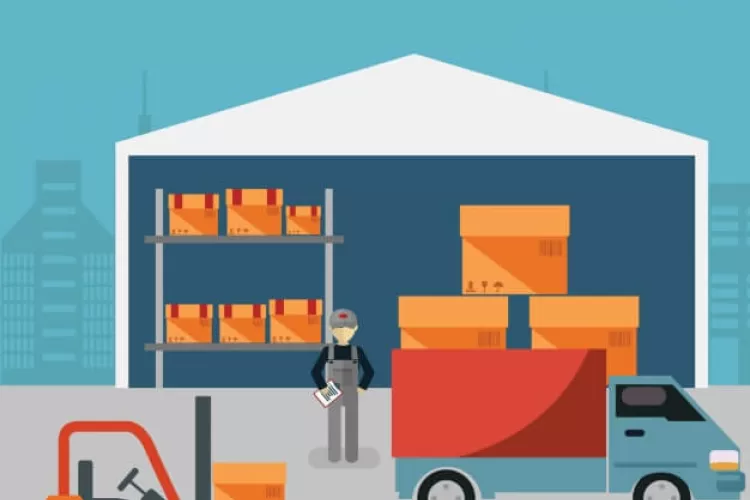How OMS can help reconcile your marketplace receivables and help track marketplace charges

In today's rapidly evolving e-commerce landscape, online marketplaces are fast becoming prominent platforms that help businesses expand their reach and increase sales.
India’s online purchasing population has been estimated to rise at a CAGR of 10.1% from 2020 to 2025, reaching a total of 291.2 million consumers. This rise makes it essential for retail brands to embrace different multi-channel marketing strategies and stay competitive. However, managing the marketplace receivables and tracking marketplace charges can be quite a complex and challenging process.
This blog explores the role of Order Management System Software (OMS) in facilitating the reconciliation of marketplace receivables and the tracking of marketplace charges.
Importance of Online Channels
 Online channels have become increasingly important for businesses in India due to several reasons.
Online channels have become increasingly important for businesses in India due to several reasons.
With the increase in internet penetration and the use of smartphones, there has been an increasing number of online consumers. This has given retailers a vast customer base, enhancing their potential for exponential growth.
Online channels have made it possible for businesses to reach out to customers in different parts of the world, going beyond the traditional geographical limitations. Your retail business can target and engage with customers across the country and also in remote areas, helping expand their market reach using various e-commerce platforms and social media.
Multichannel Order Management Systems offer highly cost-effective solutions for businesses, especially small and medium enterprises (SMEs), by eliminating the need for physical retail space and reducing their overhead costs. This makes it easier for businesses to offer competitive pricing, attract more consumers, and improve their profit margins. for Indian Businesses
Growing Trend of Selling on Multiple Online Platforms
The fast-growing trend of selling on multiple platforms has become increasingly popular among businesses across various industries.
Selling on multiple platforms essentially refers to the practice of listing and selling products or services on multiple online marketplaces, social media platforms, and other e-commerce channels at the same time. This strategy allows businesses to further diversify their reach, tap into different customer segments, and maximize their sales potential.

Integrate with multiple marketplaces using Ginesys One
Here are some key reasons why selling on multiple platforms has been gaining in popularity:
- Higher Market Reach: Selling on multiple platforms allows businesses to access a wider customer base and target different demographics. Each online selling platform attracts a unique set of users. Diversifying their presence allows them to increase their visibility and capture the attention of different customer segments. When you broaden your market reach, it becomes easier to expand the recognition of your brand and increase the chances of attracting potential customers.
- Increased Sales Opportunities: Selling on multiple platforms opens additional avenues for sales. Each platform has its own user base and customer preferences, allowing businesses to tap into different consumer markets. By listing products or services on these platforms, businesses can capitalize on diverse buyer behaviors, preferences, and purchasing patterns. This approach helps maximize sales potential and increase revenue generation.
- Risk Distribution: Relying on a single platform for sales involves several risks. Frequent changes in the algorithms, policy updates, or other unexpected disruptions can significantly impact business sales and profitability. Selling on multiple platforms mitigates this risk by spreading sales across various channels. For instance, if one platform experiences a downturn, your business can rely on other channels to maintain sales and minimize the negative impact on their overall revenue.
- Competitive Advantage: The e-commerce landscape is constantly evolving and so should you. Selling on multiple platforms will allow your business to stay competitive by reaching out to customers on the shopping platforms of their choice. It also becomes easier to monitor your competitors' strategies and adapt accordingly. Being present on multiple platforms makes it easier for you to leverage your competitive advantage and stay ahead of the competition.
- Better Customer Engagement: Multiple platforms offer several opportunities for easy communication with customers. Social media platforms, for example, allow for direct customer engagement through comments, messages, and live chats. When you’re selling through multiple channels, you can leverage these different communication channels to build customer relationships, address inquiries, provide support, and gather feedback.
Why you Should Sell on Multiple Online Channels
 The digital era has made it essential for your e-commerce business to keep innovating and adapting to remain successful. When you use multiple channels to sell online, you simplify the complex, time-consuming tasks of managing sales and inventory.
The digital era has made it essential for your e-commerce business to keep innovating and adapting to remain successful. When you use multiple channels to sell online, you simplify the complex, time-consuming tasks of managing sales and inventory.
You can also gain a better understanding of customers’ purchasing habits. When you’re able to track sales across various channels, it becomes easier to identify the latest patterns and trends in customer behaviour, including their preferred payment and shipping options. Read on to know about the various benefits of selling on multiple online channels:
Increased Reach and Visibility
Businesses can leverage the strengths and benefits of each platform to reach out to different customer segments. This includes online marketplaces, social media platforms, e-commerce websites, and industry-specific platforms. Each platform attracts a unique user base and offers distinct features, making it easier for businesses to tap into diverse demographics and expand their customer reach.
Diversifying the Customer Base
Diversifying your customer base through multiple channels allows you to expand your reach and attract a broader range of customers. Here are various ways through which you can diversify your customer base using multiple channels:
 Target Different Demographics: Each online channel attracts a specific demographic profile of users. Using multiple channels for order management makes it easier to tailor your offerings and strategies to target different customer segments. For instance, using social media platforms may be more effective in reaching out to younger audiences, while online marketplaces will attract a wider age range.
Target Different Demographics: Each online channel attracts a specific demographic profile of users. Using multiple channels for order management makes it easier to tailor your offerings and strategies to target different customer segments. For instance, using social media platforms may be more effective in reaching out to younger audiences, while online marketplaces will attract a wider age range.
Explore Niche Channels: In addition to the popular channels, you also need to look at exploring niche channels that cater to specific interests, industries, or communities. These channels might have a smaller user base but will provide access to highly targeted and engaged audiences. Identifying the most relevant channels makes it easier to tap into specific customer segments that align with their niche offerings.
Use Social Media Platforms: Social media platforms offer a wider range of targeting options, allowing you to reach more customers based on their interests, behaviors, and demographics. Strategically using social media platforms such as Facebook, Instagram, Twitter, or LinkedIn can help you diversify your customer base and engage with users who haven’t been actively searching for your products or services.

Experience the all-in-one solution for retail.
Potential for Higher Sales and Revenue
Selling through multiple channels will help you contribute significantly to higher sales and revenue for businesses. Businesses can effectively increase their sales and revenue using multiple channels. Here are some key benefits:
Expanded Market Reach
When you sell through multiple channels, you get access to a larger customer base which helps expand your market reach. Each channel attracts a unique set of customers. Diversifying your presence across channels will let you tap into different demographics and geographic regions, eventually increasing the potential for sales and revenue growth.
Targeted Marketing
You can implement targeted marketing strategies for specific customer segments. Each channel may have its own advertising options and targeting capabilities, enabling businesses to tailor their messaging and promotions to cater to the preferences and behaviors of different customer groups. Targeted marketing increases the chances of attracting relevant customers, driving conversions, and boosting sales.
Cross-Promotion and Upselling
 Selling through multiple channels provides greater opportunities for cross-promotion and upselling. You can promote complementary products or services on different online channels, encouraging customers to make additional purchases. Cross-promotion can also help increase the average order value of your products and drive incremental revenue. You can upsell your products by showcasing premium or upgraded versions of products or services across multiple channels, increasing their overall sales value.
Selling through multiple channels provides greater opportunities for cross-promotion and upselling. You can promote complementary products or services on different online channels, encouraging customers to make additional purchases. Cross-promotion can also help increase the average order value of your products and drive incremental revenue. You can upsell your products by showcasing premium or upgraded versions of products or services across multiple channels, increasing their overall sales value.
Channel Optimization
You can optimize the performance of each channel to maximize their sales and revenue. This includes optimizing their product listings, descriptions, images, and pricing for each channel. By understanding the unique characteristics of each platform and tailoring your sales to resonate with the target audience, you can improve visibility, attract more customers, and drive higher sales conversions.

Automate your business with Ginesys’ Browntape OMS
Challenges Faced in Manual Tracking and Reconciliation of Marketplace Charges
The manual reconciliation and tracking of marketplace charges can pose several challenges for businesses. Some common challenges associated with manual reconciliation and tracking are:
Time Consuming Processes
The manual reconciliation and tracking of marketplace charges are time-consuming. Data must be collected from various sources, including sales reports, invoices, and payment records, and cross-referenced with the marketplace charges.
Complexity of Data
Regular marketplaces generate a large volume of transactions, fees, and charges. Manually handling this data complexity and volume can be overwhelming and highly error prone. It becomes far more challenging to track and reconcile each transaction accurately, especially when you’re dealing with multiple marketplaces or high transaction volumes.
Lack of Real-time Visibility
Manual reconciliation and tracking processes lack real-time visibility into financial data and transaction details. This can impact decision-making, delay the identification of discrepancies, and prevent you from addressing issues that are likely to come up. It may also impact the ability to analyze sales patterns and make informed business decisions.
Difficulty in Identifying Discrepancies
Manually identifying discrepancies between marketplace charges and business records can be challenging. There are many complexities involved in marketplace fee structures, commission rates, promotional discounts and processing of refunds, which make it difficult to pinpoint discrepancies and uncover other hidden charges. This can lead to missed revenue opportunities and potential financial losses.
Inefficient and Inconsistent Processes
The manual reconciliation and tracking of processes can be inefficient and often prone to inconsistencies. Different team members may follow different approaches and use separate tools, leading to variations in data interpretation and reporting. Lack of data standardization can make the reconciliation process far more complicated, making it harder to maintain accuracy and consistency across the organization.
Scalability Challenges
When your business grows and expands its presence across multiple marketplaces, manual reconciliation and tracking becomes a lot more challenging. More transactions, along with the complexity of managing multiple platforms, and the need for quicker processing make manual processes redundant. It becomes increasingly difficult to keep up with fast-growing business demands and maintain accuracy when you’re using manual processes.
Importance of Payment Reconciliation
Reconciling payments becomes one of the biggest tasks for the finance and accounting teams (F&A teams) of eCommerce companies. With companies increasingly adopting an omnichannel approach, payment reconciliation has become far more challenging. They need to follow a clean and error-free reconciliation process to manage cash inflow and outflow.
The digital expansion and boom in eCommerce has allowed customers to shop from a company’s website or marketplaces including Flipkart and Amazon.
While it becomes easy for customers to access omnichannel retailing systems and shop seamlessly, it becomes quite a nightmare for the company’s finance teams.
They often have to manually compile data from thousands of transactions across different channels, with each channel having multiple modes of payment. Additional services such as buy now pay later, different currencies, discounts, shipping fees, product returns, buy backs, third party logistics fees and margins pose significant challenges for eCommerce companies.
eCommerce sellers face significant losses in their profits due to reconciliation errors. Some seller expenses which are included in the eCommerce payment reconciliation process are:
- Commission: For instance, if your seller is selling through Amazon, Amazon will cut a commission for itself for marketing and selling the seller’s product.
- Payment/Closing fee: The marketplace may also include additional charges like a closing fee on each product.
- Shipping charges: Many marketplaces provide shipping services to their sellers and deduct those shipping charges from the payment due to the seller for the sale. Sellers often experience errors in the recording of the product, leading to the marketplace overcharging for shipping.
- Storage/Warehousing fee: If the seller chooses to avail of the storage services of the marketplace, an extra storage or warehousing fee may also be applicable.
- Discounts: Discounts are either offered directly by the seller or the marketplace. The marketplace deducts the discount before making the payment to the seller. In turn, the seller also needs to ensure that the marketplace does not deduct from what’s due to him/her.

Start your e-commerce journey with Ginesys One's Browntape OMS.
Mitigate These Challenges with Browntape from Ginesys One
Ginesys One's Order and Inventory Management System (OMS), Browntape, helps integrate with all marketplaces and webstores and manage your inventory and orders in one place.
Browntape OMS efficiently tracks payments and various charges in different marketplaces automatically. Apart from monitoring payments and charges across multiple marketplaces, you and your team will also get insightful data regarding your estimated profit per item and per order.
Ginesys supports selling on Amazon, Flipkart, Myntra, Paytm and over 60 other marketplaces through its integrations with order management systems like Browntape. Reconcile your marketplace receivables and track marketplace charges efficiently with Browntape from Ginesys One. Ask for a demo today!



